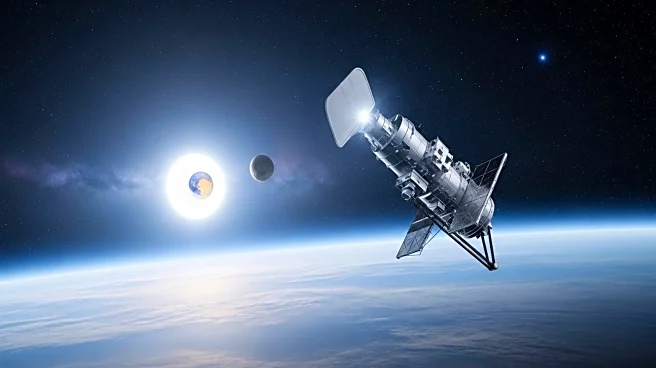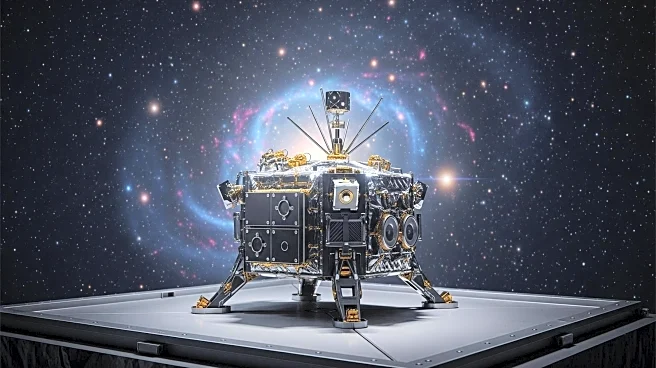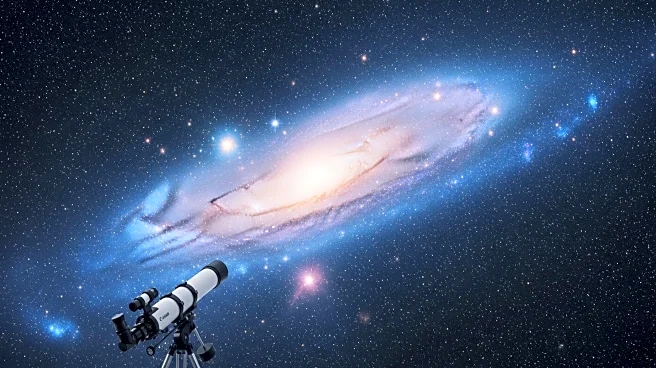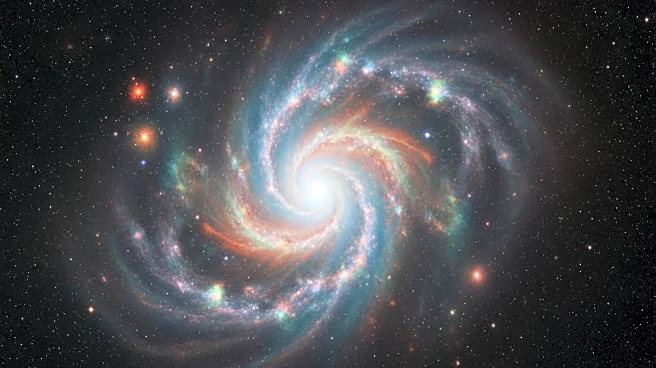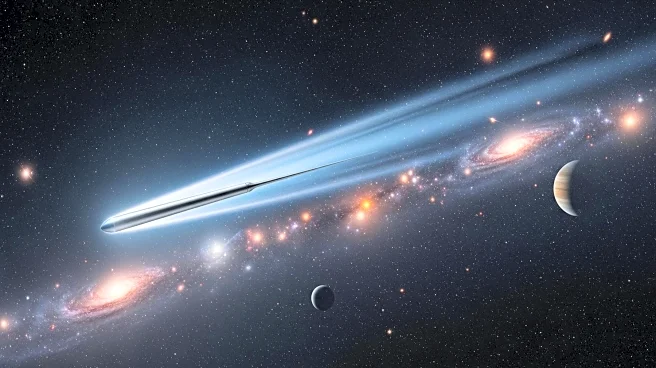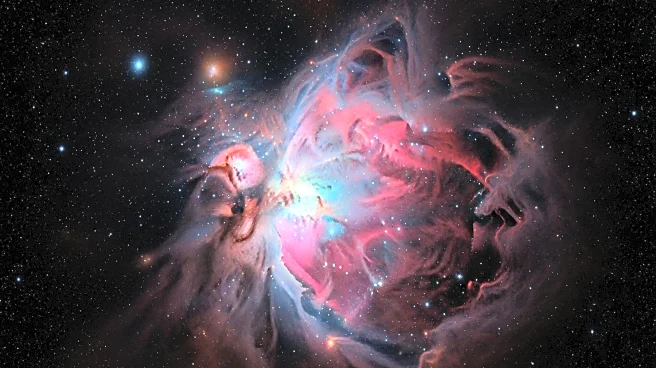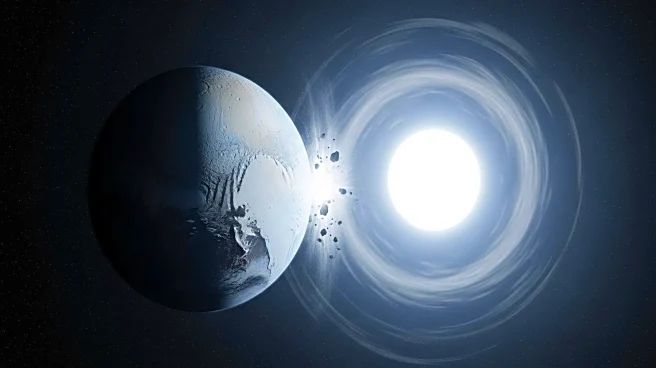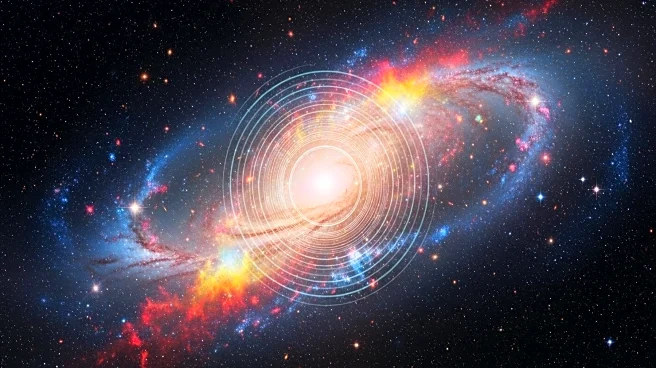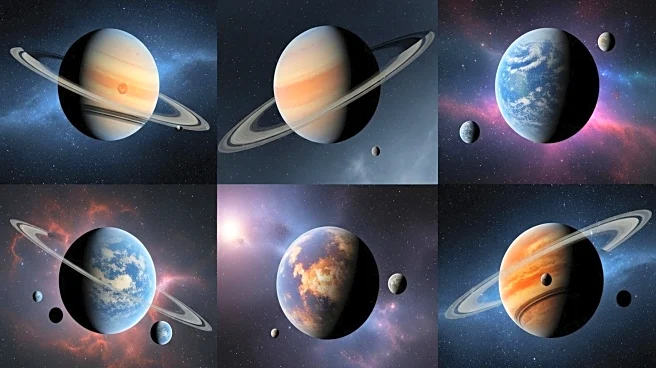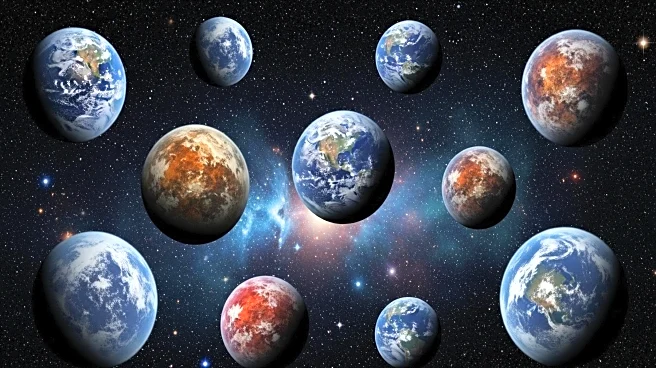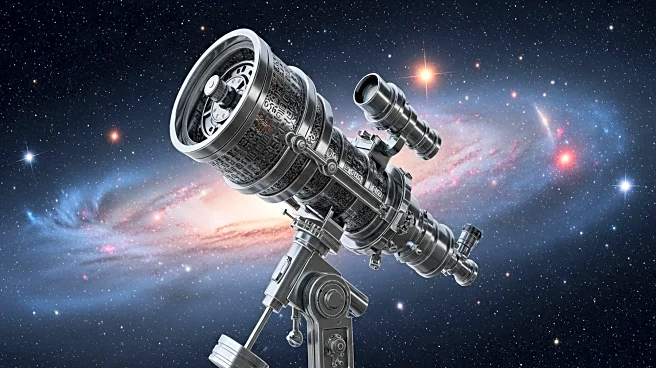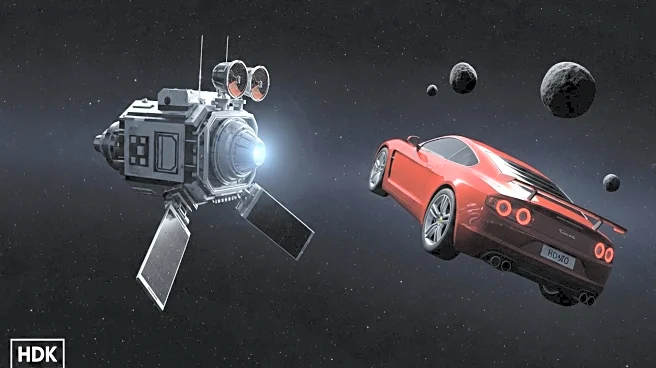What is the story about?
What's Happening?
The Hubble Space Telescope has captured images of a white dwarf star consuming a fragment of a Pluto-like object, located approximately 260 light-years from Earth. This observation reveals the icy composition of the object, which is rich in volatiles such as carbon, sulfur, nitrogen, and oxygen, indicating the presence of water. The exo-Pluto is composed of 64% water ice, a surprising discovery given that such volatile-rich materials are typically expelled from planetary systems as stars evolve into white dwarfs. The white dwarf, once a sun-like star, has drawn in and torn apart the planetesimal from its own version of the Kuiper Belt, a region filled with icy bodies. This event provides a glimpse into the potential future of our solar system, where the sun will eventually become a white dwarf and may similarly consume planets and Kuiper Belt objects.
Why It's Important?
This discovery is significant as it offers insights into the future evolution of our solar system. Understanding the composition and behavior of objects in the Kuiper Belt can help scientists predict the fate of similar bodies when our sun transitions into a white dwarf. The presence of water ice in the exo-Pluto suggests that such objects could play a role in the distribution of water in planetary systems. Additionally, the study of these fragments can enhance our knowledge of the materials that make up distant celestial bodies, potentially informing future space exploration missions and the search for life beyond Earth.
What's Next?
The research team plans to use NASA's James Webb Space Telescope to further study the white dwarf and the exo-Pluto in infrared light. This will provide more detailed information about the composition and characteristics of the fragments, potentially revealing new aspects of their formation and evolution. The findings could influence future missions aimed at exploring the Kuiper Belt and similar regions in other planetary systems.
Beyond the Headlines
The observation of a white dwarf consuming a Pluto-like object raises questions about the long-term stability of planetary systems and the fate of celestial bodies as stars evolve. It also highlights the importance of advanced telescopes like Hubble and the upcoming James Webb Space Telescope in expanding our understanding of the universe. The study of such phenomena can contribute to the development of new theories about the lifecycle of stars and the dynamics of planetary systems.
AI Generated Content
Do you find this article useful?
